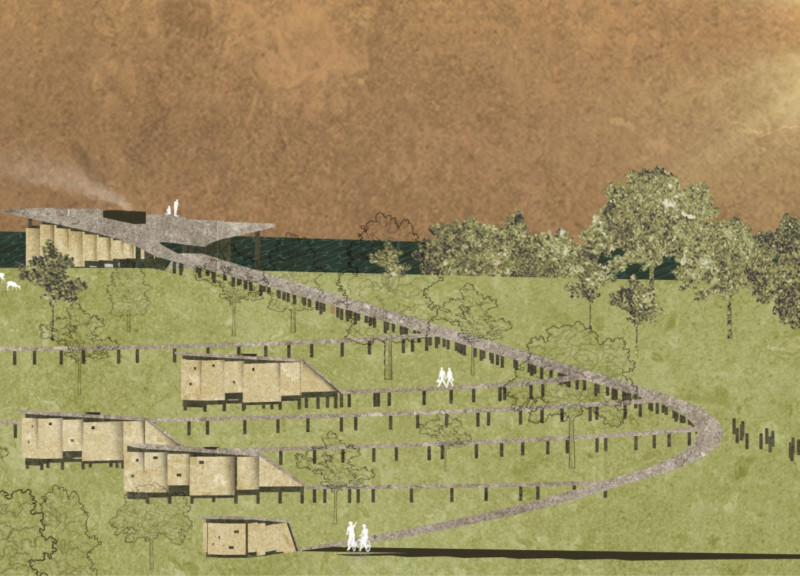5 key facts about this project
The architectural project "Leaf for Nature" presents a design that aligns closely with its natural surroundings in Latvia, emphasizing the relationship between architecture and the environment. This project consists of a series of dispersed cabins and a central communal building positioned along the banks of the Vento River, promoting an immersive experience with nature. Each cabin integrates seamlessly into the landscape, while the core building serves as a gathering space, reinforcing community and cultural ties.
The primary function of these structures is to provide a retreat where visitors can connect with nature and engage in shared activities. The cabins offer private spaces that encourage introspection and relaxation. In contrast, the core building facilitates social interaction with amenities such as a sauna and communal kitchen, vital for fostering community spirit among guests.
Unique Design Approaches and Features
"Leaf for Nature" distinguishes itself through its commitment to a circular design approach, incorporating sustainability into every phase of development. The project plans for gradual construction over a 30-year time frame, allowing for the integration of local trees into future designs, thus linking the built environment directly to the ecosystem. This method not only enhances ecological responsibility but also creates an evolving architectural narrative that responds to the growth of its surroundings.
The project employs local materials to minimize its environmental footprint. Wood sourced from local forests, straw for insulation, and tree bark for cladding showcase a commitment to resource efficiency and sustainability. Such selection is not merely functional but also deeply rooted in Latvian culture, reinforcing the connection between architecture and local identity.
Another distinctive feature is the biophilic design principles applied throughout the cabins and communal spaces. Large openings in the cabin designs allow for natural ventilation and an unobstructed view of the landscape, thus strengthening the relationship between interior spaces and the natural setting. The pathways meander through the site, further blurring the lines between built and natural environments and encouraging exploration.
Community Integration and Social Connectivity
The design fosters community engagement by situating the core building as the focal point of interaction. With spaces for communal dining and cultural activities, the project engages visitors in shared experiences that encourage social bonding. Traditional elements, such as the sauna, play a crucial role in Latvian culture and enhance the authenticity of the experience offered.
The combination of dispersed cabins and a central gathering space aims to create an environment where visitors can share experiences while still finding solace in their individual cabins. This duality of private and communal spaces caters to diverse needs, allowing the architecture to serve multiple functions effectively.
For those interested in a deeper exploration of the architectural details, including comprehensive architectural plans, architectural sections, and specific design insights, be sure to review the full project presentation. This will provide greater context to the design choices and functional articulations that define "Leaf for Nature."






















































